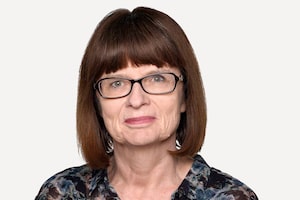Journalism needs to reflect the world as it is, which is why covering the diversity of Canada and working at better representing its many communities is so important.
Much of what is covered everyday is institutional – government, conflicts, the courts, major businesses – which doesn’t show much diversity. While the news of the day is important, it can’t overwhelm coverage because that’s a narrow view of life.
Coverage must be broad enough to include human-interest stories and issues, from unequal treatment in prisons (especially of Indigenous peoples) to celebrating the work of all Canadians in the arts and business.
In the past few months, I have counted all the stories and photos in the print edition over four separate, week-long periods, documenting gender and racial diversity in pictures, authors and main subjects or sources.
This is the fifth year I have done such a survey and the third year that I have included a separate tally of BIPOC representation (Black, Indigenous, people of colour).
Photos, which are usually diverse, had an even better result this year, while subjects and sources showed improvement in gender and racial diversity. More authors were BIPOC, but the number of female writers slipped.
But let me slip in some of the many caveats to such a study. I don’t always know someone’s ethnicity or gender, although I search them online to see how they identify, which is a personal matter and not always stated. (The number of people self-identifying as non-binary through their social media was very small.) It is also four weeks chosen somewhat at random and only covers what appeared in print.
Starting with photos, 44 per cent were of women. Almost one-quarter of the images of males were of racialized; for women, that number was almost one in five. The results are more equitable on Saturdays, when there are more feature stories (as opposed to news-driven coverage), with half the images showing women, and about 30 per cent featuring racialized men or women.
Last year, 38 per cent of photos over all included women, of which 30 per cent were racialized. Of the men featured, 14 per cent were racialized.
Moving to articles, subjects saw increased coverage in terms of both gender and racial diversity. The amount of female authors slid back – although the diversity of writers increased, based on those who appeared to present as BIPOC.
In terms of sports journalism specifically – one of the most male- and white-dominated areas – The Globe is doing better than the industry average. A study by the University of Central Florida’s Institute for Diversity and Ethics in Sports found that in the United States and Canada, only 8 per cent of articles were written by a woman or team of women. At The Globe, 20 per cent of Sports bylines came from women (both staff and wires) – but while one in 10 of the men were racialized, there were no racialized women writers that I saw. Photos again were strong, with 43 per cent of Sports images showing women, and more than a third featuring racialized men or women. For main subjects or sources, more than a third were women; one-quarter of men were racialized, but only 15 per cent of women were. It must be noted, however, that these numbers may have been better than during a normal winter-spring period because the survey included Olympics coverage and less hockey news.
Across all sections, the byline count for women was 32 per cent – still well below parity and down two percentage points from last year. Representation of people presenting as BIPOC rose to 13 per cent of men and 10 per cent of women, from 4 per cent of both men and women last year. Those numbers include staff, freelance and outside authors.
Also compared with last year, there was an increase in coverage of women as main subjects or sources to 38 per cent from 34 per cent, and an increase in racialized people to almost 20 per cent from 10 per cent.
There have been some steps forward and one small step back; clearly, more needs to be done. We need to be more mindful of our choices about whom to interview, which opinion voices to showcase, what topics to feature and whose photograph to publish.
I shared the survey results with The Globe’s Head of Newsroom development, Sandra E. Martin, who is bringing back a newsroom program, called Breaking the Habit, that highlights diversity wins in both online and print coverage.
“Over six weeks, this program gives the newsroom a framework to focus on these efforts and hold each other accountable,” Ms. Martin says. “Through weekly check-ins, we can look at where we made an active choice to interview a woman or a BIPOC source, or choose an image that better reflects the makeup of Canada’s population, and share strategies across our many teams.”
She noted that The Globe is also building relationships with organizations that help the newsroom connect with sources and hiring prospects from underrepresented groups.
Our Morning Update and Evening Update newsletters are written by Globe editors, giving you a concise summary of the day’s most important headlines. Sign up today.
 Sylvia Stead
Sylvia Stead